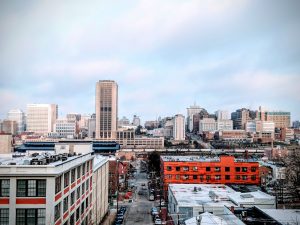California
Coronavirus has impacted California’s housing market in such a way that housing sales are the lowest levels since the Great Recession (PR Newswire). May’s numbers were down over ~41%, and year to date, the sales are down ~13%. Fifty of fifty-one counties in the state reported year over year losses in sales, while thirty-one of those fifty-one counties reported a year-over-year price increase. California is already facing a staggering housing affordability and homelessness crisis; a prolonged period of unemployment will make matters even worse. Areas of bright spots appear to be Riverside and San Bernardino County. Sales in this region are up ~20% from 2019, and the “Inland Empire” has been a mecca for emigres from the LA/Orange County area; the population has increased ~230K, over the last five years. Now would be the time to strike in the region, even with the threat of virus cases spiking.
New Mexico
As the summer months heat up, New Mexico’s market looks to be lethargic. The number of housing sales and price increases from 2019 to 2020 is inconsequential, even as the national economy stayed strong throughout the earlier part of 2020 and the end of 2019. Much of that can be attributed to a dearth of inventory- a whopping 40% less than this time last year, via GAAR. With cases spiking over the southwest, it may be a while before any activity continues to progress in the state.
Texas
 The coronavirus epidemic in Texas slowed the market in the spring and now threatens to upend the market in the worst setback since the 1986-1990 recession (Texas Real Estate Center). Despite being an “essential business,” SFR construction permits have plummeted ~22%; sales declined almost ~18%. An even bigger warning sign: despite historically low mortgage rates, mortgage applications are down nearly 29% on the year thus far. The TREC also predicts that “activity is expected to worsen.” These dismal figures exclude the rental market, where, “disproportionate job losses occurring at the lower end of the earnings spectrum which primarily consists of renter households.” Texas has been hugely successful in the last few years between new build construction and resales, and a go-to for investors. However, as some states are starting to see the coronavirus come under control, July has begun to batter the Lone Star State, setting new records for daily cases every day. These numbers will likely get worse before they get better.
The coronavirus epidemic in Texas slowed the market in the spring and now threatens to upend the market in the worst setback since the 1986-1990 recession (Texas Real Estate Center). Despite being an “essential business,” SFR construction permits have plummeted ~22%; sales declined almost ~18%. An even bigger warning sign: despite historically low mortgage rates, mortgage applications are down nearly 29% on the year thus far. The TREC also predicts that “activity is expected to worsen.” These dismal figures exclude the rental market, where, “disproportionate job losses occurring at the lower end of the earnings spectrum which primarily consists of renter households.” Texas has been hugely successful in the last few years between new build construction and resales, and a go-to for investors. However, as some states are starting to see the coronavirus come under control, July has begun to batter the Lone Star State, setting new records for daily cases every day. These numbers will likely get worse before they get better.
Colorado
Markets in Colorado have been largely untouched by the upheaval in other parts of the country. Realtor.com ranks the Colorado Springs market as the hottest market in the country for the third month running. One of the shortest lockdowns in the nation, ending on May 9, 2020, has helped the market stabilize more quickly than other areas. While home sales are down 15%, median home prices are stabilized, leaving ample room for opportunity- listings are up 53%. Colorado has recently seen a boom in millennials flocking to the market, who are rapidly aging into homeownership. Single-family residences for a modest price that can be flipped will provide an opportunity.
Montana
 Realtors are reporting a rush of interest for Montana real estate, specifically from out-of-state buyers. Upon entering Phase 2 of reopening, a deluge of buyers from “urban areas” looking to escape city life aided in the spike of home prices in areas of Bozeman and Whitefish. The Montana Regional MLS reported a median sales price of homes in western Montana was ~$282K, and increased by ~$6K in just 5 months. While areas around Bozeman remain expensive, if properties are available for foreclosure, or at auction, it might be an opportunity for a quick flip as people look for a second home escape, especially if the predicted “second wave” of COVID-19 happens.
Realtors are reporting a rush of interest for Montana real estate, specifically from out-of-state buyers. Upon entering Phase 2 of reopening, a deluge of buyers from “urban areas” looking to escape city life aided in the spike of home prices in areas of Bozeman and Whitefish. The Montana Regional MLS reported a median sales price of homes in western Montana was ~$282K, and increased by ~$6K in just 5 months. While areas around Bozeman remain expensive, if properties are available for foreclosure, or at auction, it might be an opportunity for a quick flip as people look for a second home escape, especially if the predicted “second wave” of COVID-19 happens.
Wyoming
Wyoming is seeing a bit of a so-called “COVID Comeback.” Low taxes and a low population have resulted in increased demand in the area as people look to leave cities, and the state’s affordability plays better than more expensive neighboring Colorado. According to American West Real Estate, the market as exploded; the company manages ~350 rental properties, with ~20 vacant on average. Following the pandemic, they are down to just ~5 vacant properties. As more companies move to work from home, it may be worthwhile for some investors to test the market- sprawling rivers, national parks, beautiful landscape, low cost of living, all may conspire to benefit the situation.
Oklahoma
 COVID-19 cases are spiking across the south, but investment in Oklahoma City, specifically, remains strong. As the seat of state government and major corporations: AT&T, Sonic Corporation, The Boeing Company, The Hertz Corporation, United Parcel Service, Johnson Controls, MidFirst Bank, and American Fidelity Insurance- all businesses unlikely to be impacted long-term by the virus. With a strong economy, a booming homebuilder market adds credence to the thought that the market may rebound quickly. One caveat; a booming market may hit a backlog as it looks to reboot following several weeks of backlog during the shutdown, so low numbers over the coming weeks may belie the stronger long-term numbers.
COVID-19 cases are spiking across the south, but investment in Oklahoma City, specifically, remains strong. As the seat of state government and major corporations: AT&T, Sonic Corporation, The Boeing Company, The Hertz Corporation, United Parcel Service, Johnson Controls, MidFirst Bank, and American Fidelity Insurance- all businesses unlikely to be impacted long-term by the virus. With a strong economy, a booming homebuilder market adds credence to the thought that the market may rebound quickly. One caveat; a booming market may hit a backlog as it looks to reboot following several weeks of backlog during the shutdown, so low numbers over the coming weeks may belie the stronger long-term numbers.
Louisiana
Pre-pandemic Louisiana was a no-go zone with rising unemployment and a limited economy. That fact remains in the post-COVID era, too. Unemployment in New Orleans in May topped out at 24%, and evictions are over ~5%, nearly double the national average. LA has ended its moratorium on evictions, and federal unemployment ends at the end of July, meaning many more individuals will likely end up homeless. Increased unemployment makes even New Orleans anathema for investment with the lack of prospective employment for renters or buyers.
Alabama
Similar to West Virginia, the rental market in major metros of Alabama has been impacted with the uncertainty around the university sector despite the college-going full-steam ahead with the new school year, particularly in places such as Birmingham and Tuscaloosa. However, that change in traditional tactics is leading to an unexpected strength for the condo and apartment market in the state. Given the record-low interest rates and affordability, roughly ~$100K or less, it makes a negligible difference for parents to purchase condos and apartments for students. Two additional positives that are adding to the calculus: a student alone in a condo limits the exposure to coronavirus in a crowded dorm, and residency lowers tuition. Smart investors might be looking at either buying condos to rent, or, if nothing else, staying out of the larger rental market in college towns.
Florida
 While many other states on the east coast stayed inside for much of the late spring, Florida was business as normal, but the end of the second quarter has brought a typhoon of infection rates on the Sunshine State. As federal unemployment is set to expire at the end of July but businesses, beaches, and the all-important hospitality industry close, a wave of foreclosures are expected, per the Sun-Sentinel. One million jobs, or 14.5% unemployment, in Florida alone have been lost to the pandemic, and that was even before the huge volume of cases. Within a year to 18 months, there could be a 10-20% decline in house values. As the long-term recovery from the virus, and economic impact, continues, investors should look to this time frame to start making moves for foreclosures, auctions, and short-sales to make the most of the turn-around.
While many other states on the east coast stayed inside for much of the late spring, Florida was business as normal, but the end of the second quarter has brought a typhoon of infection rates on the Sunshine State. As federal unemployment is set to expire at the end of July but businesses, beaches, and the all-important hospitality industry close, a wave of foreclosures are expected, per the Sun-Sentinel. One million jobs, or 14.5% unemployment, in Florida alone have been lost to the pandemic, and that was even before the huge volume of cases. Within a year to 18 months, there could be a 10-20% decline in house values. As the long-term recovery from the virus, and economic impact, continues, investors should look to this time frame to start making moves for foreclosures, auctions, and short-sales to make the most of the turn-around.
Maryland
Maryland offers a glimpse of the new normal in terms of what buyers are looking for in the post-COVID era. A strong fall/summer is likely after a weakened spring of stay-at-home orders. Buyers are looking for increased space; 30% of respondents are looking for a home office, and over 60% of respondents to a survey by Bright MLS found their new home via virtual tours/showings. Other requirements: 26% required a larger yard, and 21% for a “less dense” neighborhood, indicating that Maryland’s suburbs are going to start to see increased activity.
DC
 While spring is normally the busy season for the housing market, the lockdown has delayed, but certainly not halted the 2020 season in Washington, DC. As lockdown eased in the nation’s capital in early June, home sales resumed and began to outpace the weekly metrics of 2019; March’s numbers were already doing so before the lockdown order went into effect, and the market has picked up where it left off. Strong prices and continued economic redevelopment in outlying neighborhoods have helped, as well. As of May 30, the market is at 74% of 2019’s volume by the end of May, per Urban Pace, and looks likely to get back on pace for the year sooner than later.
While spring is normally the busy season for the housing market, the lockdown has delayed, but certainly not halted the 2020 season in Washington, DC. As lockdown eased in the nation’s capital in early June, home sales resumed and began to outpace the weekly metrics of 2019; March’s numbers were already doing so before the lockdown order went into effect, and the market has picked up where it left off. Strong prices and continued economic redevelopment in outlying neighborhoods have helped, as well. As of May 30, the market is at 74% of 2019’s volume by the end of May, per Urban Pace, and looks likely to get back on pace for the year sooner than later.
Delaware
Delaware has seen a surge of inventory, and the market is decidedly misaligned at the moment, via Million Acres. Delaware saw a ~17% increase in inventory. Despite a ~12% decline in demand. Delaware’s relative proximity to the major cities in NJ, DE, and NY, plus suburban living will likely result in higher demand as the market stabilizes. Any market where inventory outpaces listings is a buyer’s market, and investors can stand to see long-term gains here.
Arkansas
Next Advisor reports that the single most expensive monthly cost for Americans is housing; given the loss of income and contracting job market, Americans are looking inward- as in, towards the middle of the country. Northwest Arkansas is one of the markets that is looking strong for investors in the long-term. Corporate bases of companies like Walmart and Tyson, as well as the university sector, provide employment opportunities, and affordability is 12th in the nation. It could be a strong play to invest here this year.
Georgia Market
Home sales rose ~20% in Atlanta in the first week of June, evidence of a “pent-up demand” as the economy slowed during the initial wave of the virus in the spring. Sales are up 6% from January-June, 2020, as opposed to the same period in 2019. However, it bears watching how the situation will continue to unfold as Georgia writ-large struggles to contain soaring case numbers (even the mayor of Atlanta tested positive for coronavirus in early July 2020) (Atlanta Journal-Constitution). Effective Mon., July 6, the city shut down again to combat resurging cases, likely putting a pin in much of the activity for at least a few weeks.
Tennessee Market
 Eastern Tennessee is seeing a positive impact from the coronavirus epidemic. A seller’s market, prices have gone up by ~6% as demand increases. With interest rates the lowest that they have been since the 2009-2011 post-recession era, it stands to be a strong market for the short-term for Tennessee (ABC 6). Given the demand for the market, it would be best to stay away for investors- not just because deals will be difficult to find, but with a small spike in cases in the south, the market may be put on pause.
Eastern Tennessee is seeing a positive impact from the coronavirus epidemic. A seller’s market, prices have gone up by ~6% as demand increases. With interest rates the lowest that they have been since the 2009-2011 post-recession era, it stands to be a strong market for the short-term for Tennessee (ABC 6). Given the demand for the market, it would be best to stay away for investors- not just because deals will be difficult to find, but with a small spike in cases in the south, the market may be put on pause.
Kentucky
If Lexington’s June numbers are an indicator for the rest of the state, it stands to be a strong rebound for the state writ-large. The Pending Home Sales Index, a predictive tool for home sales based on contract signings, increased from ~44.3% to ~99.6% in May in Lexington- the largest month-over-month gain in the index since National Association of Realtors began measuring such data. With a slower spring, it looks as though the sales cycle will be pushed into summer and fall.
South Carolina
 It is unsurprising that after cities bore the brunt of the virus cases, demand for suburban living has skyrocketed. One surprising location, however, is the suburbs of Columbia, SC. Eight of the top ten suburban metros in the country experiencing interest are in the south; at the top of the list were the suburbs of Columbia. Approximately half the zip codes in the area saw a ~42% increase in listing views (realtor.com). Additionally, the demand on the market is sure to remain strong with the combined proximity to For Jackson and the University of South Carolina. With a median home price at about one-third the national average, the area is ripe for opportunity.
It is unsurprising that after cities bore the brunt of the virus cases, demand for suburban living has skyrocketed. One surprising location, however, is the suburbs of Columbia, SC. Eight of the top ten suburban metros in the country experiencing interest are in the south; at the top of the list were the suburbs of Columbia. Approximately half the zip codes in the area saw a ~42% increase in listing views (realtor.com). Additionally, the demand on the market is sure to remain strong with the combined proximity to For Jackson and the University of South Carolina. With a median home price at about one-third the national average, the area is ripe for opportunity.
North Carolina
North Carolina’s COVID-19 impact is being felt significantly in the multifamily development sector. In Raleigh and Charlotte, multifamily construction continued as an essential service, albeit with a few adjustments: increased size as home space becomes a priority; no-touch doors and elevators; increased outdoor spaces; maintenance accessibility without entering units, and increased space between user areas in co-living space such as gyms; or even substitution for common spaces, such as outdoor exercise areas and spaces (Triangle Business Journal). Developers seem to be keeping in mind that the work-from-home efforts will continue long-term, and the adjustments will likely become larger trends throughout national developments.
Virginia
 Virginia has been a massive push towards not only suburban but so-called “rural” living. According to Virginia Realtors, reported ~76% of respondents planned on focusing on rural areas; ~56% were looking at suburban areas; and less than ~2% thought cities would resume as the focus (Inside NoVa). The focus seems to be transitioning to action: homes are on the market for around ~38 days, which is ~9 days less than the average for the same period of 2019, despite a decreased number of sales. Like much of the rest of the nation, it appears that the market is being delayed into the summer and fall months.
Virginia has been a massive push towards not only suburban but so-called “rural” living. According to Virginia Realtors, reported ~76% of respondents planned on focusing on rural areas; ~56% were looking at suburban areas; and less than ~2% thought cities would resume as the focus (Inside NoVa). The focus seems to be transitioning to action: homes are on the market for around ~38 days, which is ~9 days less than the average for the same period of 2019, despite a decreased number of sales. Like much of the rest of the nation, it appears that the market is being delayed into the summer and fall months.
West Virginia
Coronavirus has altered education significantly, which in turn has impacted the multifamily rental market in West Virginia. One of the largest industries is West Virginia University, with its ~29K students and faculty making up a large demographic for the rental market in Morgantown. Normally, a large swath of the market is full for the following year from the previous December; however, landlords are reporting significant delays in filling their units as COVID causes educational upheaval. Universities are grappling with having campuses full for the start of the year, or facing a mid-year shutdown again; as such, many students are looking to continue education online or delaying signing leases for the time being. As such, a strong and consistent sector of the rental market is suddenly shaky.
To view all of Sharestates’ open real estate investments, click here.


